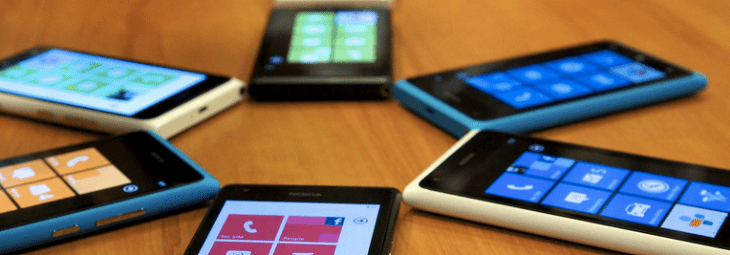Microsoft and Nokia told investors that their deal would close in the first quarter of 2014. They have two weeks to meet that guidance, which remains unchanged even in the face of Nokia’s recent legal setback.
Let’s review the firms’ most recent statements regarding the closing period for the deal. Here’s Microsoft from its most recent 10Q (the company declined to provide new comment):
We expect the acquisition will close in the first calendar quarter of 2014, subject to regulatory approvals and other closing conditions.
And Nokia, in a statement from February that it referred TechCrunch to when asked about the potential closing date for the deal (Nokia said it will not comment further in its most recent statement, and followed up on that by not commenting on a follow-up question):
Nokia would like to stress that recent developments in India related to ongoing tax proceedings are not expected to affect the timing of the closing nor the material deal terms of the anticipated transaction between Nokia and Microsoft, announced on September 3, 2013.
The transaction is still expected to close in the first quarter of 2014, subject to regulatory approvals and other customary closing conditions, irrespective of the proceedings in the Indian tax case.
So it’s good to go, right? Well.
Nokia recently lost a request for appeal in India over a dispute regarding taxes. This means that the company has to either put up a huge $572.5 million sum against potential tax costs in the country, or a factory that is quite important to Nokia, and Microsoft, will remain a frozen asset. Presumably that would put the deal as originally created on hold, as one of the assets that Microsoft intends to buy is unavailable for purchase.
Nokia’s response to the failure to get an appeal was sharp:
Today, India’s Supreme Court declined to hear an appeal by Nokia on how its assets could be unfrozen and transferred to Microsoft. The decision means that the case now reverts to the February 5 Delhi High Court ruling on the asset transfer.
Nokia is disappointed by today’s decision. The company strongly believes its offer to the Indian tax department is fair for all sides, allowing its employees and assets to transfer to Microsoft while also providing the necessary financial guarantees. Nokia regrets the anxiety this extended legal process has caused its employees.
Nokia will now consider its next steps. It will not comment further at this point.
Nokia had previously agreed to put $369 million aside for potential tax penalties. The company also dislikes the government’s plan for how it would tap the pool of cash it demands. To quote the India Times:
Nokia has claimed that the order implied that the letter of guarantee could be cashed in whenever the tax authorities raised a demand, leaving the company without the opportunity to dispute any claim.
So the sums here are huge and tangled. Why is the factory frozen? The Times is blunt:
“Fearing that Nokia may wind up its local operations after the Microsoft transaction without paying the tax — which has risen to more than Rs 15,000 crore, including penalties and interest, according to authorities — the income-tax department had frozen the Chennai factory within days of the deal being announced last September.”
This raises the following question: Can the deal be done without the factory? Nokia could operate it for Microsoft, but the company wants to see it sold; interim decisions could be used as stopgap measures. Nokia can well afford the tax bill, ironically, after the deal goes through. That it is selling an asset and keeping the legal exposure it generated is also darkly humorous.
The lack of guidance from the companies as to whether the timeframe for the deal has changed, how they intend to proceed, and what implications it will have on their operations and incomes is likely due to legal requirements and a rapidly shifting situation. That doesn’t make the opaque situation less irksome.
We’ll see.
IMAGE BY FLICKR USER Sam Churchill UNDER CC BY 2.0 LICENSE (IMAGE HAS BEEN CROPPED)
